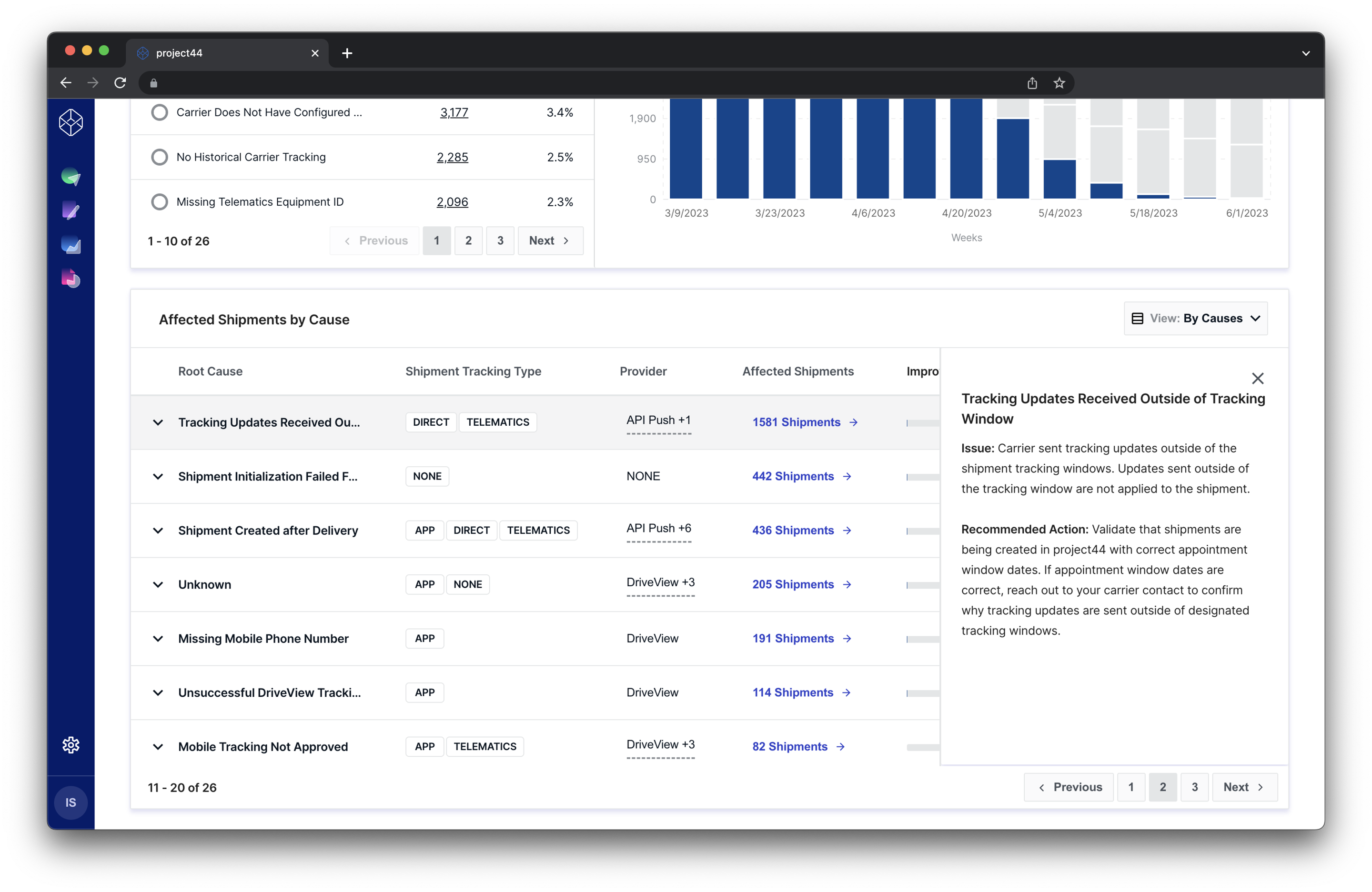Truckload tracking plays a central role in the efficient movement of goods from origin to destination – visibility into these shipments and orders uncovers insights into trends and outliers that can increase supply chain velocity and save your business time and money.
There are several factors that make truckload tracking historically difficult, including lack of standardization in the trucking industry, inaccurate or inconsistent data provided by carriers, shippers, or both, breakdowns in communication and collaboration between shippers and carriers, and external factors or unforeseen events.
Ensuring a vendor has extensive network breadth, high network connectivity, and streamlined carrier onboarding processes are all important for getting up and running with visibility. However, achieving maximum shipment visibility is not a one step process. It is a continual evolution that requires maintenance and attention over time as new shipments and orders are moved through the supply chain and as new carriers are onboarded to deliver these goods.
How project44 Helps

To overcome the typical challenges with Truckload Tracking Visibility, project44 created Truckload Tracking and Root Cause Analysis to give customers insight into why their shipments aren’t tracking and deliver recommended actions on how to resolve these issues. The solution offers a unified view of all untracked shipments by carrier, identifies the root cause error for why shipments didn’t track, provides information on which errors have the biggest impact on tracking percentage, and offers recommended actions for how to solve each root cause error.

In short, the Truckload Tracking and Root Cause Analysis takes one of the biggest pain points for customers trying to improve truckload tracking visibility – and turns it into a strength by centralizing, automating and enabling teams to self-service to solve shipment visibility issues. Teams can view trends related to historical shipments that did not track, drill down into specific root cause error details on why shipments did not track, view recommended actions to resolve shipment tracking errors, and download shipment details to share with other internal stakeholders or carriers.
Customer Success Story: Efret
A key use case of Truckload Tracking and Root Cause Analysis is the ability to identify carriers with low tracking performance. Then, customers can use recommended actions for the root cause errors associated with shipments that did not track a particular carrier. And finally, solve issues and improve tracking percentage for those carriers in question.
Efret – an EU Transportation company based in the UK – used the dashboard to identify a key carrier that was connected but was tracking at 0%. Efret used recommended actions in Root Cause Analysis based on the detailed error codes available to resolve issues and drastically improve tracking percentage:
Over the past 6 weeks, we’ve utilized the Truckload Tracking and Root Cause Analysis product to drive one of our lowest performing carriers from 0% to 95% tracking.
Alexander Patterson
Business Development Associate, Efret
This is just one of the many use cases that Truckload Tracking and Root Cause Analysis can solve for customers. In upcoming posts, we’ll cover more customer use cases in detail and highlight important new functionality coming to Root Cause Analysis. Explore Root Cause Analysis in Movement here.



